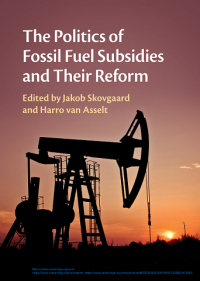Defining and Measuring Fossil Fuel Subsidies

For many years, policy discussions have focused on strategies to bring down greenhouse gas emissions using taxes, permits and other regulatory or statutory limits. Yet fossil fuel markets across the world remain littered with government programs subsidizing these emissions. The subsidies are large and act as a negative tax on carbon, slowing the transition to cleaner fuels, weakening the impact of carbon constraints and absorbing a significant portion of government revenues in many countries.
These factors have increasingly led governments and international organizations to view fossil fuel subsidy reform as an important carbon mitigation strategy and fiscal lever. The G20 reached an initial agreement in 2009 to ‘phase out and rationalize over the medium term inefficient fossil fuel subsidies’(G20 2009),with members of the Asia-Pacific Economic Cooperation (APEC) group following suit (APEC 2009). In September 2016, China and the United States–the two largest greenhouse gas emitters–took that process another step forward by publicly releasing a voluntary peer-reviewed version of their fossil fuel subsidy reports (China 2015; G20 Peer Review Team 2016a, 2016b; United States 2015).
While the importance of subsidy reform is clear, widely varying estimates of subsidy magnitude and continuing battles over subsidy definitions slow reform efforts and complicate political consensus building. Differing coverage also affects reported figures: some assessments focus on subsidies to the consumption side of the market, others on producer subsidies and some on both. Global estimates vary by at least an order of magnitude, with a similar dispersion of country-specific estimates.
Beginning with a brief overview of the most common approaches to measure global subsidies to fossil fuels, this chapter discusses subsidy definitions, current global estimates, key causes of estimate variance and measurement gaps. Areas of common agreement are also presented; these are frequently broader than numerical variance alone would suggest and are critical for successful reforms. The chapter concludes with several high-leverage opportunities for improving subsidy transparency going forward.
This chapter is available via open access from the Cambridge University Press at the link above. There are many other important pieces of work in this volume, also available via open access. View the contents here.

